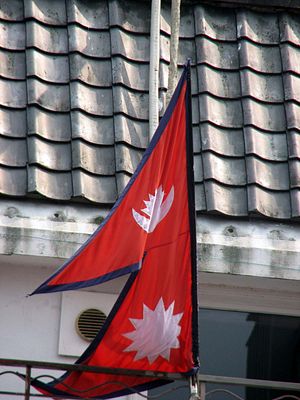Women have been practicing in the legal profession for over a hundred years. However, a sad state of affairs sees women around the world remaining marginalized in the senior rankings of the profession, and sexism is still endemic. That’s true in Nepal as well.
Nepali women are still largely treated unequally compared to their male peers. We see this even when it comes to claiming citizenship – which can be done by birth through fathers but not through mothers. Astonishingly, only 8.3 percent of Nepali women in the labor force are paid and they disproportionately represent low skill occupations.
The first woman received her certificate from the Supreme Court of Nepal in 1960, but it wasn’t until 1963 that the first woman could actually practice law, fight cases, be registered as an advocate. Over 50 years later, legal demographics still see men dominating the profession, with women’s participation in the justice sector being disheartening until now. In a survey conducted by the Nepal Bar Association, it was seen that the women’s participation as lawyers and judges was very nominal. According to the Nepal Bar Association, there are a total of 18,160 lawyers in Nepal and only 2,200 of them (or 12 percent) are women. The data also shows that only 174 women are senior advocates. Similarly, there is a huge disparity in the number of women serving as government attorneys and judges. The legal profession is still a male-dominated sector, and the low participation of women reinforces traditional fixed gender roles.
Even though the number of women law graduates has increased in the past few years, there are several barriers that discourage them from pursuing a legal career. Gender stereotypes are common in the legal profession. A woman has to work more to prove herself than a man does. Women also lack support networks in the legal profession. If they are not given enough challenging or high-level work then this generates a self-perpetuating barrier: If women do not feel like they are supported then they are likely to leave, and if they are likely to leave then seniors do not feel like investing as much time in mentoring them. Workplace structures also act as a barrier to women. Women need to balance out their personal and professional life. In the profession of law, where long hours are the norm, there have been reports of female advocates claiming that they have not had enough time either for themselves or their families. This is furthered by the patriarchal mindset of Nepali society.
Another peculiar barrier to women lawyers in Nepal stems from the term used to address judges in Nepali courts. In Nepal, the judges are to be referred to as “Shreeman” while arguing a case in a court of law. This term can cause discomfort and can lead to a negative impact on female lawyers, because “Shreeman” is generally used to address a woman’s husband. The use of this term by women lawyers in court has led to mockery in the past, with instances of even clients laughing when women refer to judges as “Shreeman.”
We should seek equality in substance, not just on paper. In the present scenario, women are positioned as the head in all the three organs of the state. They are competent women and are role models for society. But still, there is a need for Nepal to substantially contribute to Sustainable Development Goal 5: Gender Equality. Equality should be reflected in results. Article 18 of the Constitution of Nepal guarantees a right to equality and special provision for women without discrimination are provided under Article 38. Equality should be translated into action through progressive realization as we need to bring changes to the system. In the context of the legal profession, that means bringing in a proportional participation of women lawyers at all levels.
Dikshya Koirala is a Research Associate at the World of Legal Research. Her prime areas of interest involve family law and criminal law.
Harsh Mahaseth is currently pursuing his graduate degree in Asian Legal Studies from the National University of Singapore. His work focuses on Asian studies, public international law, and human rights.

































